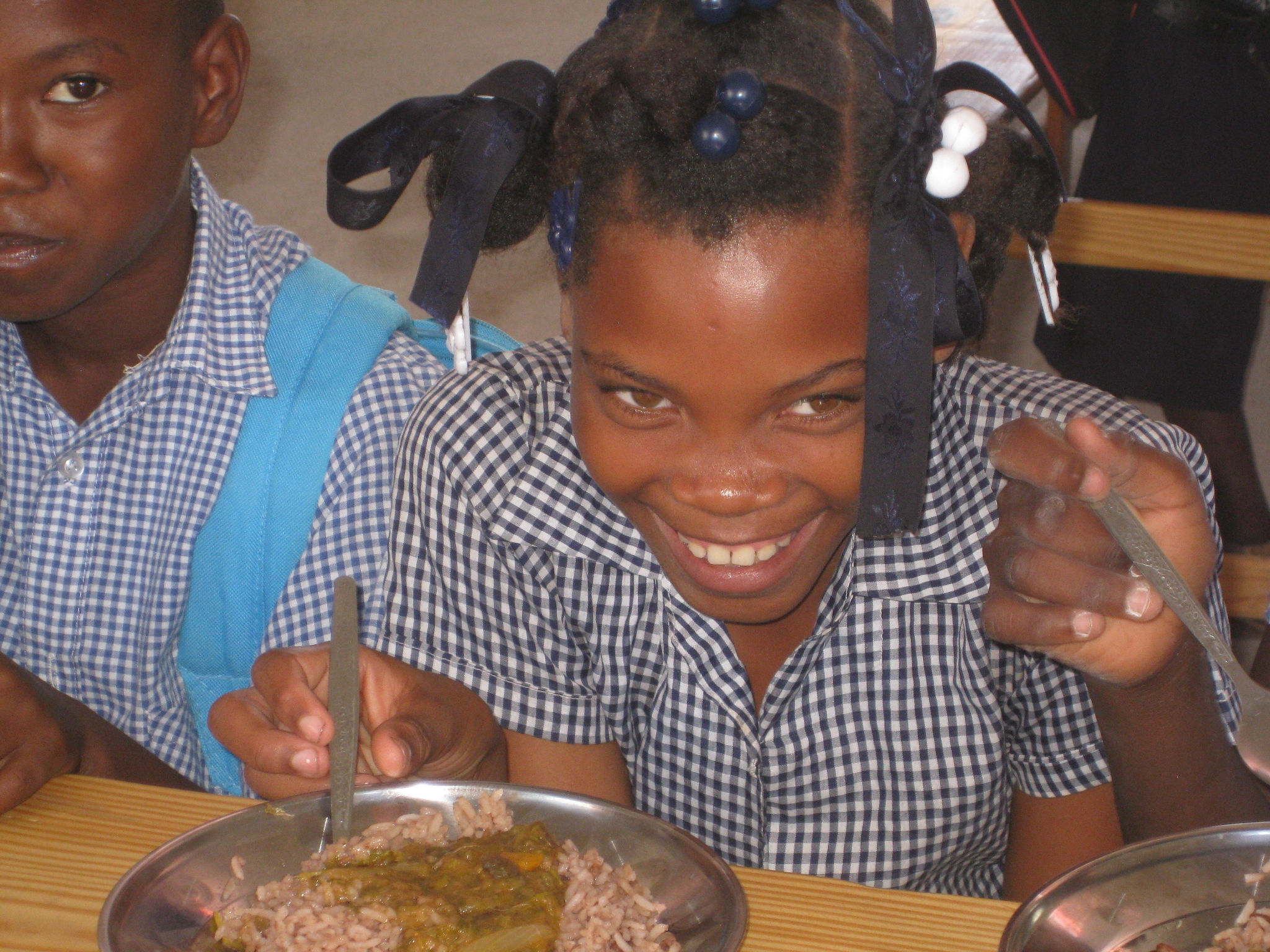National Nutrition Month– Shocking Stats From Around the World
March 21, 2014 — In the United States March is National Nutrition Month. Sponsored by the Academy of Nutrition and Dietetics, the annual campaign is “designed to focus attention on the importance of making informed food choices and developing sound eating and physical activity habits.”
At Operation USA, we know that not everyone has the luxury of making healthier choices. In countries around the world, and even here in the United States, there are millions of people who face food insecurity and struggle for adequate access to nutritious food and clean drinking water. Read on for some eye-opening statistics on food insecurity and nutrition around the world.

A young girl enjoys a meal provided by an Operation USA-supported feeding program in Jacmel, Haiti
SHOCKING STATS:
The USDA defines food insecurity as meaning “consistent access to adequate food is limited by a lack of money and other resources at times during the year.” In the United States in 2012 14.5% of households faced food insecurity.
842 million people worldwide do not have enough to eat.
Poor nutrition causes 45% of deaths in children under 5. That’s nearly 3.1 million children who die worldwide each year due to lack of nutritious food.
1 out of 6 children in developing countries is underweight.
In 2012, 49.0 million Americans lived in food insecure households, 33.1 million adults and 15.9 million children.
66 million primary school-age children attend classes hungry across the developing world, with 23 million in Africa alone.
About 165 million children globally are stunted, resulting from not enough food, a vitamin- and mineral-poor diet, inadequate child care and disease. As growth slows down, brain development lags and stunted children learn poorly.
About 1.5 million children die annually due to wasting. Rising food prices, food scarcity in areas of conflict, and natural disasters diminish household access to appropriate and adequate food, all of which can lead to wasting.
About 2 billion people are affected by inadequate iodine nutrition worldwide. More than one third of preschool-age children globally are vitamin A deficient. Vitamin A deficiency is the leading cause of preventable blindness in children.
Together, maternal and child undernutrition account for more than 10 percent of the global burden of disease.
The rise in overweight and obesity worldwide is a major public health challenge. People of all ages and backgrounds face this form of malnutrition. As a consequence, rates of diabetes, cardiovascular disease and other diet-related conditions are escalating worldwide. These are very difficult to treat in places with limited resources and with already overburdened health systems. Globally, about 43 million children under age five are overweight, according to 2011 figures.
ADDRESSING THE CHALLENGES:
It is clear that poor nutrition is a worldwide problem. Unfortunately, in many developing countries around the world, and even in poor communities here in the United States, people are lacking the resources needed to overcome these challenges. A combination of education, improved preventive medical care, increased access to healthful foods and clean drinking water and economic stimulation can help communities improve overall nutrition to lengthen lives and decrease child mortality–and many organizations, including Operation USA, are actively working on addressing these improvement areas.
Operation USA has long been committed to aiding nutritional improvements around the world. By supporting feeding programs in Haiti, children are guaranteed a nutritious meal each day. By providing water purification supplies to areas affected by disasters and war, communities are able to access much-needed clean drinking water. By supporting agriculture and micro-finance programs in countries such as Vietnam, Sri Lanka and Nicaragua, families become more self-sufficient and have greater access to food resources.
A donation to Operation USA helps support programs like these and more around the world. Click here to make a donation now.
http://www.wfp.org/hunger/stats
http://feedingamerica.org/hunger-in-america/hunger-facts/hunger-and-poverty-statistics.aspx
http://www.who.int/features/factfiles/nutrition/facts/en/